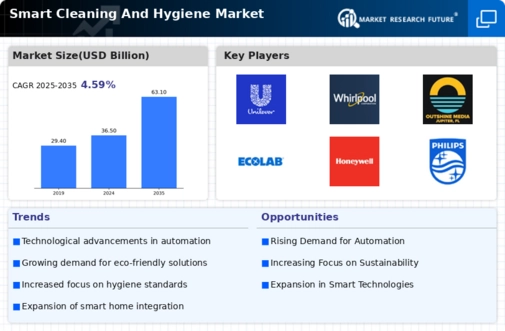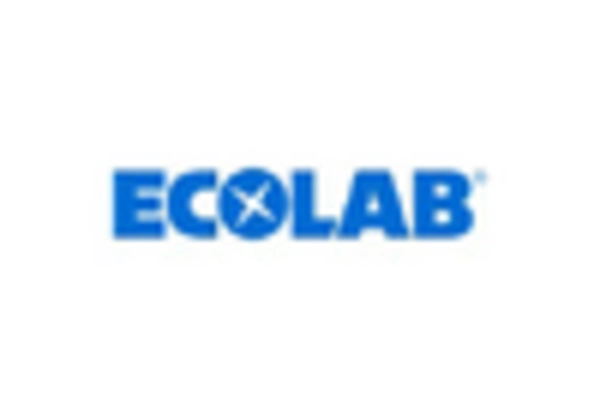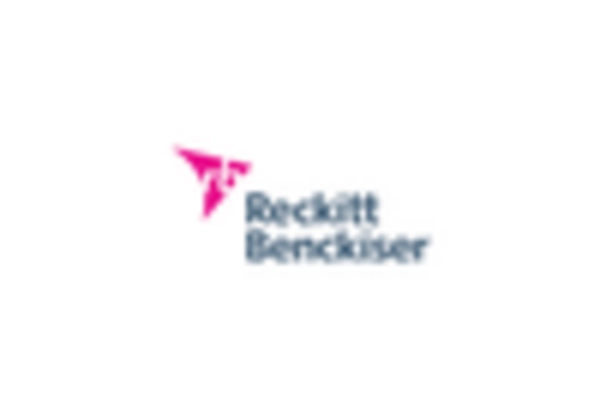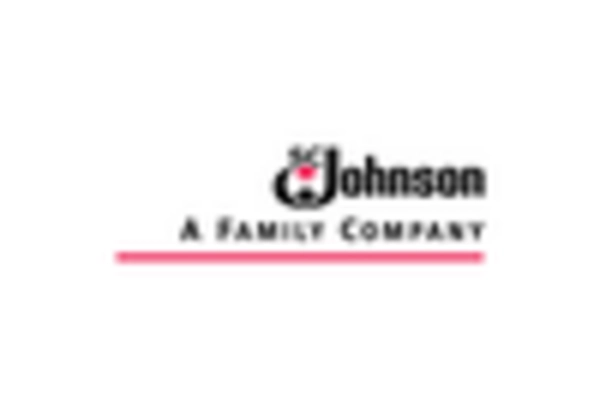Regulatory Compliance
Regulatory compliance is increasingly influencing the Smart Cleaning And Hygiene Market, as governments and organizations implement stricter hygiene standards. These regulations often mandate the use of specific cleaning products and technologies to ensure public health and safety. For example, the introduction of guidelines for sanitation in healthcare facilities has led to a rise in demand for advanced cleaning solutions that meet these standards. The market for disinfectants and sanitizers is projected to grow significantly, driven by the need for compliance with health regulations. This regulatory landscape compels businesses to invest in smart cleaning technologies, thereby fostering growth within the Smart Cleaning And Hygiene Market.
Increased Urbanization
Urbanization is a significant driver of the Smart Cleaning And Hygiene Market, as densely populated areas require more efficient cleaning solutions. The rise in urban populations leads to higher demand for hygiene and cleanliness in public spaces, residential areas, and commercial establishments. As cities expand, the need for advanced cleaning technologies becomes more pronounced. Data suggests that urban areas are expected to account for over 70% of the global population by 2050, which will likely increase the demand for smart cleaning solutions. This trend emphasizes the necessity for innovative cleaning technologies that can cater to the unique challenges posed by urban environments, thus propelling the Smart Cleaning And Hygiene Market.
Sustainability Initiatives
Sustainability initiatives are shaping the Smart Cleaning And Hygiene Market as businesses and consumers alike seek eco-friendly cleaning solutions. The growing concern over environmental impact has led to an increased demand for products that are both effective and sustainable. Companies are now focusing on developing biodegradable cleaning agents and energy-efficient cleaning devices. Market Research Future indicates that the demand for green cleaning products is expected to rise significantly, with consumers favoring brands that demonstrate a commitment to sustainability. This shift towards environmentally responsible cleaning practices not only addresses consumer preferences but also aligns with broader sustainability goals, thereby driving growth in the Smart Cleaning And Hygiene Market.
Technological Advancements
The Smart Cleaning And Hygiene Market is experiencing a surge in technological advancements that enhance cleaning efficiency and effectiveness. Innovations such as IoT-enabled devices, robotic cleaners, and AI-driven analytics are transforming traditional cleaning methods. For instance, the integration of smart sensors allows for real-time monitoring of cleanliness levels, which can lead to more targeted cleaning efforts. According to recent data, the adoption of robotic cleaning solutions is projected to grow at a compound annual growth rate of over 20% in the coming years. This trend indicates a shift towards automation, which not only improves operational efficiency but also reduces labor costs, thereby driving the Smart Cleaning And Hygiene Market forward.
Consumer Awareness and Demand
Consumer awareness regarding hygiene and cleanliness is a pivotal driver of the Smart Cleaning And Hygiene Market. As individuals become more informed about the importance of maintaining clean environments, there is a growing demand for effective cleaning solutions. This heightened awareness is particularly evident in sectors such as hospitality, healthcare, and food service, where cleanliness is paramount. Market data indicates that consumers are increasingly willing to invest in smart cleaning devices that promise enhanced hygiene and convenience. This trend suggests that the Smart Cleaning And Hygiene Market will continue to expand as consumers prioritize cleanliness in their purchasing decisions.

















Leave a Comment